You might not like him, but Brendan Rodgers: manager of the year?
As the Liverpool boss returns to former club Swansea on Monday night, FFT's Andrew Murray asks: if the Reds finish fourth, would it be the Ulsterman’s biggest achievement yet?
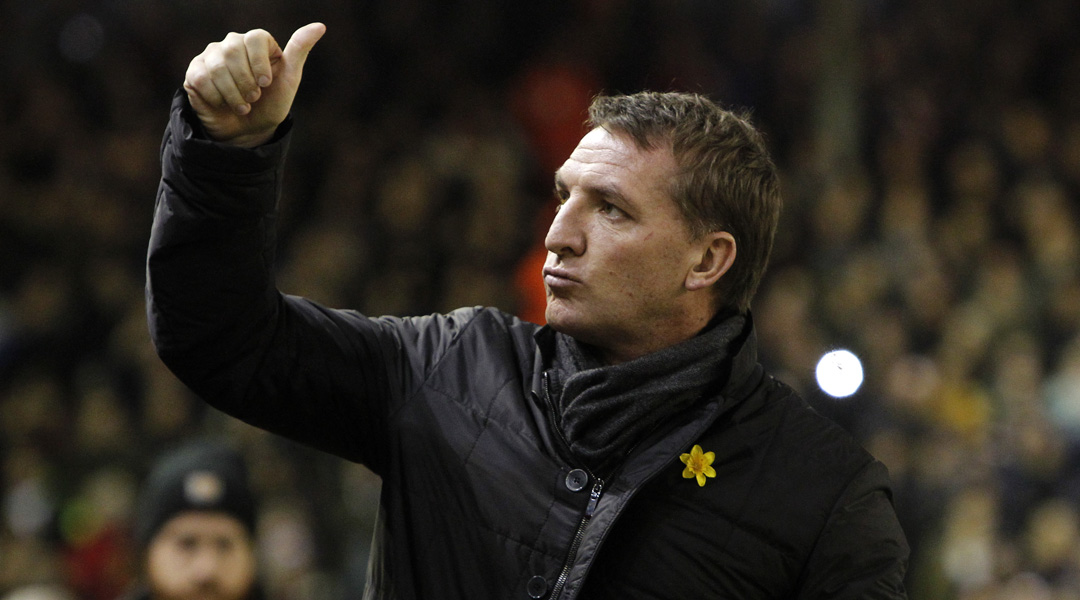
Disconsolate and alone, Brendan Rodgers stood motionless, as a light Manchester drizzle kissed his lapels.
His arms folded, the Liverpool manager stared onto the Old Trafford pitch wearing a hollow, terrified look last seen on Dustin Hoffman, sat on a bus back seat, at the end of The Graduate.
The chants from the Manchester United fans – ranging from the tried and tested “you’re getting sacked in the morning” to the more caustic “Brendan Rodgers, football genius” – can’t have improved his mood, either. It’s a lonely experience being 3-0 down at the Theatre of Dreams.
Already out of the Champions League at the hands of Swiss minnows Basel, Liverpool were destined for a season’s mediocrity. Rumours of dressing room unrest abounded. Rumours Rodgers himself didn’t exactly dampen post-match – “there have always been issues” – as he fielded constant questions about his future.
The summer’s £117m squad overhaul, to replace Barcelona-bound Luis Suarez with quantity, but not apparent quality, was increasingly the pinata struck hardest by Rodgers’ critics. “It's a different club and different vision we have here,” he’d said in July, comparing the Reds’ transfer dealings with a post-Gareth Bale Spurs. “At Liverpool there's a strategy behind what we are doing.”
It had seemed misguided at the time. By December, it looked downright stupid. The Reds were 10 points behind Manchester United, another season’s Champions League football about as likely as Jeremy Clarkson keeping his 'strong opinions' to himself when presented with a plateful of cold vol-au-vents.
Three months on, however, Liverpool trail their fourth-placed M62 rivals by just two. Indeed, as he returns to Swansea on Monday night, Rodgers hasn’t tasted defeat in 90 minutes – cup losses to Chelsea and Besiktas coming in extra-time and on penalties, respectively – since that Old Trafford reverse.
Get FourFourTwo Newsletter
The best features, fun and footballing quizzes, straight to your inbox every week.
But how has he gone from the sack to being linked to Manchester City? And, whisper it, if Liverpool finish fourth, is it a bigger achievement than even last season’s exploits?
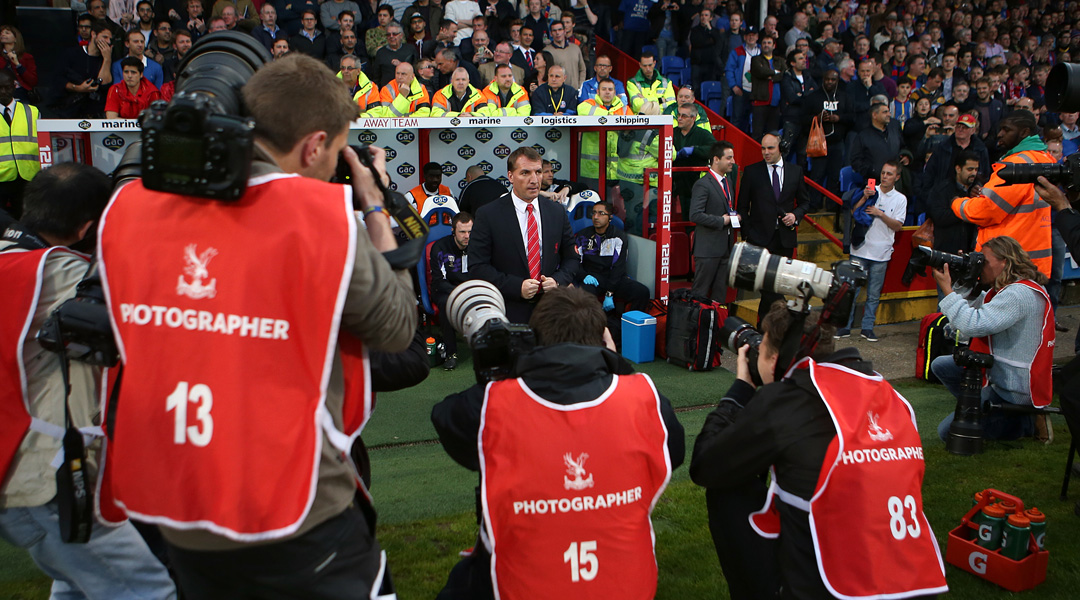
The early struggles
In 2013/14, Suarez’s individual brilliance had extricated Liverpool from the most impossible of predicaments into which their fragile defence had placed them. Despite resembling a malnourished storm trooper, Martin Skrtel looked easily bullied, with £20m centre-back Dejan Lovren rediscovering his error-strewn Lyon form with unerring regularity, and Alberto Moreno struggling to settle.
Without the Uruguayan or the injured Daniel Sturridge after August’s 3-0 win at Spurs, the back four buckled and the team imploded. The Reds won two of the following nine – scarcely deserved 2-1 and 3-2 victories against struggling West Brom and QPR – and kept one clean sheet in a goalless home draw to Hull.
Rodgers’ nadir came in a 3-1 collapse-from-ahead defeat at Crystal Palace in late November.
“It wasn’t working,” the Liverpool boss has since said of that period, fearing the sack. “We had no identity, everyone could see it. After Palace, in particular, I felt it doesn’t matter how much support [from the board] you have, the team is not functioning and it couldn’t go on.”
A month later came United, yet that Gotterdammerung also represented Rodgers’ tactical turning point. Liverpool had actually played well – Red Devils keeper David de Gea was man of the match – with a restructured back three, four in midfield and two playmakers supporting Raheem Sterling as an unlikely centre-forward.
The zip and thrilling chaotic position-switching that had so defined 2013/14’s title surge, and was so lacking in this season’s first 16 games, had returned. Much of the credit has to go to Rodgers. A 3-4-3 is hardly the most obvious formation to which to turn when struggling for defensive solidity, yet the 42-year-old coach saw its advantages: an extra body at the back, the opportunity for the attack-minded Moreno to play further forward and two playmakers to provide the support for Sterling as front man.
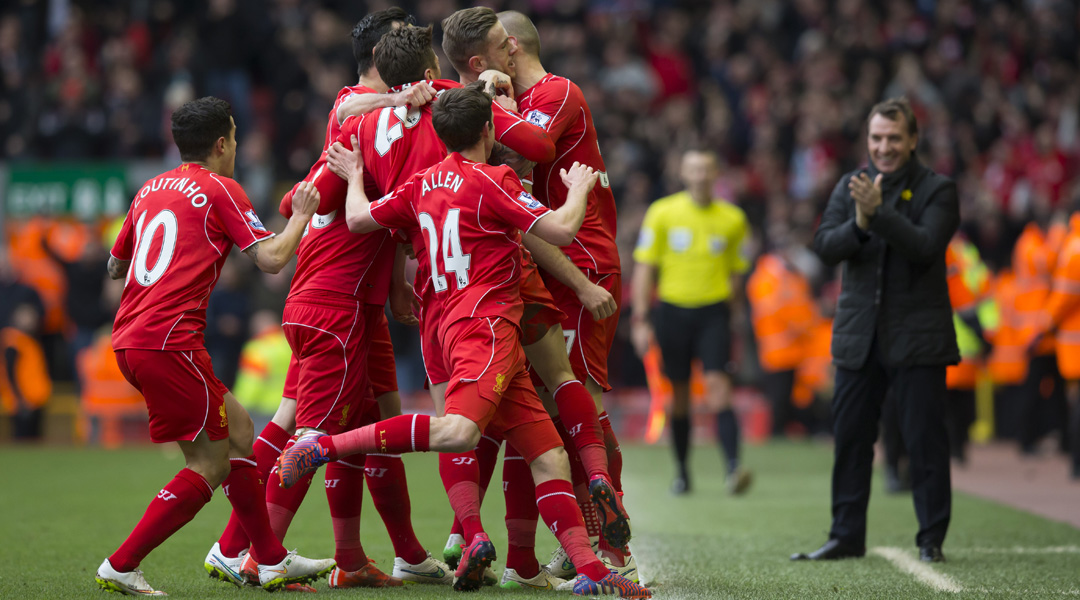
With Mamadou Sakho and Emre Can brought in either side of Skrtel at the back, Liverpool have kept seven clean sheets in the 12 games since that first back three experiment at United. The back three defend the width of the penalty area, the wide midfielders – often Lazar Markovic on the right and Moreno on the left – offering support closer to the wings.
Further forward, Rodgers’ perceptive tactical eye has been keenest felt by Philippe Coutinho. The Brazilian playmaker has excelled since the turn of the year, adding end product to the existing talent. With another attacking midfielder, often Adam Lallana, alongside him, the No.10 has the help to paint his pretty patterns.
It may have taken Rodgers too long to realise that consigning Coutinho to the wing is like recruiting a concert pianist to tinkle the ivories in a brothel, but credit must go to finding this solution.
Bringing through the youth
It’s not just tactically that Rodgers has impressed – his development of players is also worthy of note. Yes, he’s hung players out to dry – never better exemplified than his dropping of keeper Simon Mignolet “indefinitely” – but they’re often welcomed back.
Taking advantage of an injury to Brad Jones, Mignolet has returned a more confident keeper, while Sakho – who stormed out of Anfield after not making the matchday squad for September’s league game with Everton and wasn’t seen for a month with a 'thigh injury' – has been a defensive mainstay.
Away from the second chances, Jordan Henderson has developed into captain material under Rodgers because he’s capable of following tactical instruction. Name a single Liverpool fan who would have said that two-and-a-half years ago. Also, name a single regular Liverpool watcher who thinks the team has missed Steven Gerrard in the last month’s injury-enforced lay-off.
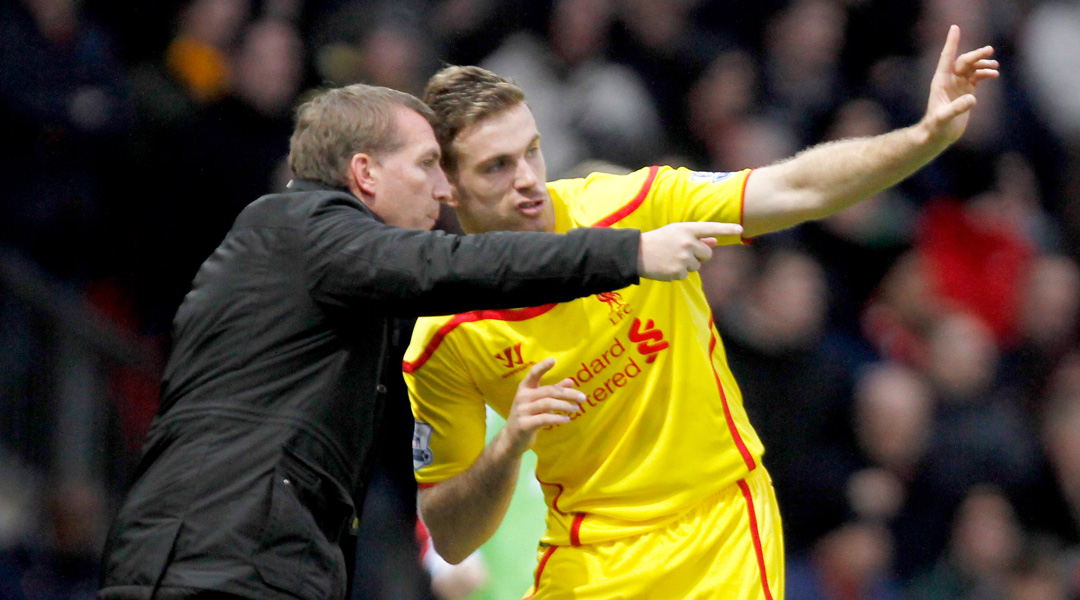
Sterling, too, has evolved from a promising, if occasionally one-dimensional winger, into a multi-functional attacker capable of playing in four different positions.
Clearly, the No.31 himself plays a not-insignificant role in his own development, but few managers would have the awareness to experiment with Sterling’s position quite so readily.
Similarly, hopes are high on Merseyside that Rodgers can have the same effect on Jordon Ibe. Recalled early from his loan to Championship high-flyers Derby, the 19-year-old has featured primarily on the right of Rodgers’ midfield four, his dribbling impressing many. That Ibe has been thrown immediately into first-team action is testament to his manager’s commitment to blooding youth teamers.
Things Magic Brendan likes…
For all this, however, it can still be difficult to warm to Rodgers. Had FFT the inclination to whiten our coffee-stained gnashers, we’d naturally want to show them off at every opportunity, but we haven’t, so we don’t.
You also get the feeling that he believes in his undoubted tactical acumen slightly too much in post-game interviews. February’s 2-0 win at St Mary’s was achieved without a recognised centre-forward in the starting XI, and three on the bench. “Liverpool’s manager,” wrote Barney Ronay, not incorrectly, in The Guardian, “sent out another of his Magic Brendan lineups.”
He knows how to spin a constant line, too. Barely a press conference goes by without Rodgers talking about how “proud” he is of his players. This season, since January especially, the state of the Anfield pitch has been a particular bugbear. If you were to take Rodgers at his word, it resembles a post-apocalyptic calcine wasteland that slows his team down to barely more than a crawl.
“Our players were pleasantly delighted to see so much grass on the pitch at Anfield,” smiled Blackburn Rovers manager Gary Bowyer after last weekend’s 0-0 FA Cup quarter-final draw. “Brendan was complaining about the pitch here. Wait until he sees Ewood.”
Then there’s the celebration. Left hand in pocket, right hand raised aloft as if to say, “yeah, I pretty much knew that was going to happen”.
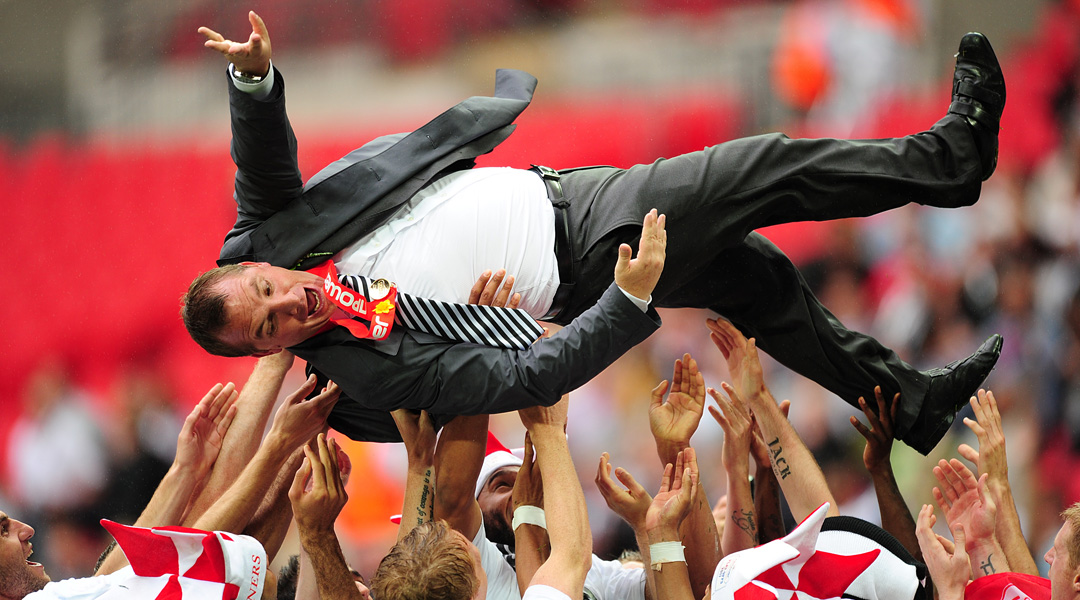
Top four and more…
These are, however, minor irritations. If Liverpool can record another victory at the Liberty Stadium on Monday night, the venue where Rodgers first emerged into English football’s wider consciousness, further praise will rightly be heaped on him.
In 2013/14, he won the LMA Manager of the Year award. Yet Liverpool’s second-place finish owed as much, if not more, to Suarez’s individual brilliance than anything from the dugout. Rodgers merely found a way to get Suarez, Sturridge and Sterling to function in the same team and let them get on with it.
Twelve months later, he's had to dig deep to return the Merseysiders to the top four. He has no go-to star, he’s survived without his most clinical (but injured) striker, he’s reinvented the team’s shape to reinvigorate a flagging season.
In short, Rodgers has done, halfway through the season, what most managers have the luxury of the summer to do – completely remodel the team’s formation, personnel and atmosphere – all without 54 SAS goals the previous season. True, it was arguably his fault he had to do so, but that Liverpool are within spitting distance of the top four, impossible just three months ago, is undoubtedly down to the Ulsterman.
Brendan Rodgers, football genius? He might well be.
Andrew Murray is a freelance journalist, who regularly contributes to both the FourFourTwo magazine and website. Formerly a senior staff writer at FFT and a fluent Spanish speaker, he has interviewed major names such as Virgil van Dijk, Mohamed Salah, Sergio Aguero and Xavi. He was also named PPA New Consumer Journalist of the Year 2015.
